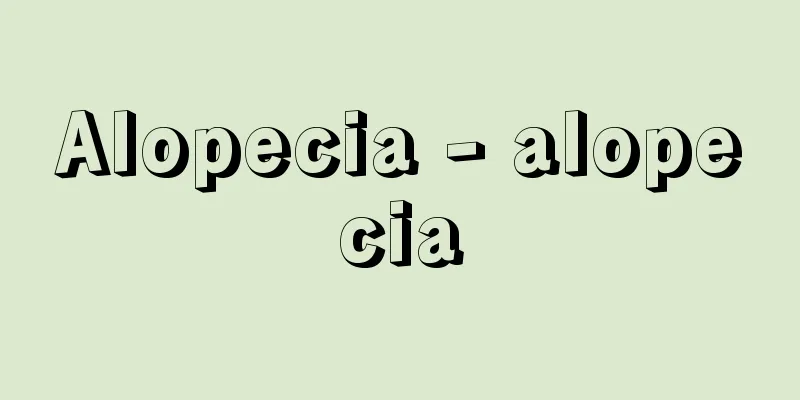Medicinal bath - Kusuriyu

|
This refers to bath water that has had hot spring ingredients or medicinal plants added to it as bath additives. Hot springs have been used since ancient times to treat illnesses and wounds, and among the general public, plants themselves have been added to the bathtub as medicinal baths, such as iris baths on the seasonal festival in May and yuzu baths on the winter solstice. Hoping to gain the same benefits of hot spring ingredients, bath additives were invented outside of hot spring areas and at home, and initially hot spring ingredients were dried and powdered for use. One example is yu no hana (hot spring flower). The types of springs used in balneotherapy include simple springs, saline springs, earthy bicarbonate springs, Glauber's salt springs (mainly sodium sulfate), bitter springs (sulfate springs), alkaline springs, acidic springs, alum springs, sulfur springs, ferric carbonate springs, and radioactive springs. Using the inorganic salts that are the main components of these springs, various bath additives have been developed to reproduce the effects of hot springs at home. The effects vary depending on the salts used, but the following purposes can be mentioned: (1) warm the body, improve blood circulation, and increase metabolism, (2) have sedative and analgesic effects, (3) promote sweating and remove waste products from the body, (4) after bathing, the salts form a film that adheres to the surface of the body and has a heat-retaining effect, (5) if alkaline, they remove sebum and dirt from the surface of the body and make the skin smooth, and (6) those that contain sulfur have bactericidal properties and are considered effective in treating skin diseases. Many commercially available bath salts contain colorings and fragrances in addition to salts. Medicinal plants used as bath additives date back to the Muromachi period, and are recorded in Goboku Hasso-yu and Miki Isso-yu. The Goboku refers to mulberry, sophora japonica, paper mulberry, elm, and willow, or alternatively, mulberry, sophora japonica, paulownia, Chinese chinaberry, and magnolia, or alternatively, mulberry, sophora japonica, peach, paper mulberry, and willow, while the Eight Herbs refers to iris, mugwort leaf, plantain, lotus leaf, cocklebur, honeysuckle, horsewhip, and chickweed. During the Edo period, in the east, hot spring water was reheated and called medicinal baths, while in the west, medicinal baths using medicinal plants appeared in addition to public baths, and in the mid-Meiji period, bathing baths such as Yuyo Chujo-to and Yuyo Jitsubo-san were sold commercially. These were made by putting chopped herbal medicines into a cloth bag and decocting them in a set amount of hot water, then placing the bag and the decocted liquid in the bathtub to make a medicinal bath. They are used as a folk remedy for bathing. In addition to promoting metabolism, removing waste products, and providing heat retention, those containing tannic acids have astringent and anti-inflammatory effects, while those containing saponin have cleansing properties and inhibit bacterial growth. Those containing azulene also promote the regeneration of skin tissue, and those containing oils and mucus have a protective effect on the skin surface. Commercially available bath additives have evolved from hot spring ingredients and medicinal plants, leading to the development of new bath preparations, and their production and consumption as quasi-pharmaceutical products is steadily increasing year by year. [Fumiji Koho] [Reference item] |©Shogakukan "> Medicinal baths (plants used as folk remedies) It is customary to chop up the roots and leaves of iris and add them to the bath or take a bath on the Boys' Day. It is said that this will ward off evil spirits and prevent illness. This custom was established on May 5th in the mid-Edo period. You can see irises on the eaves of the roof (top right of photo). Utagawa Kunisada's "Five Seasonal Festivals: May", triptych, owned by the National Diet Library . Iris bath Source: Shogakukan Encyclopedia Nipponica About Encyclopedia Nipponica Information | Legend |
|
温泉成分や薬用植物を浴剤として入れた湯をいう。古くから疾病や傷の治療に温泉が用いられ、また民間では5月の節供の菖蒲(しょうぶ)湯、冬至の柚(ゆず)湯など、浴槽に植物そのものを入れて、薬湯として親しんできた。温泉成分の効能を期待して、温泉地以外で、また家庭で、温泉と同じ効果を得ようとして考案されたのが浴剤で、初めは温泉成分を乾燥し粉末化したものが用いられた。湯の華(はな)がその例である。 温泉療法に用いられる泉質には、単純泉、食塩泉、重炭酸土類泉、芒硝(ぼうしょう)泉(おもに硫酸ナトリウム)、苦味泉(硫酸塩泉)、アルカリ性泉、酸性泉、明礬(みょうばん)泉、硫黄(いおう)泉、炭酸鉄泉、放射能泉などがある。これらの主成分である無機塩類を用いて、温泉の効果を家庭内で再現しようとして種々の浴剤が開発された。その配合塩類により効果は異なるが、目的としては次のようなものがあげられる。(1)身体を温め、血液の循環をよくし、新陳代謝を高める、(2)鎮静・鎮痛作用をもつ、(3)発汗を促進し、身体の老廃物を除去する、(4)浴後、塩類が被膜となって体表面に付着し、保温効果がある、(5)アルカリ性の場合には、皮脂や体表面の汚れをとり、肌を滑らかにする、(6)硫黄を含むものは殺菌性を有し、皮膚病の治療に有効とされている。市販の浴剤には、塩類のほかに色素と香料を加えたものが多い。 浴剤として用いる薬用植物については、古くは室町時代にさかのぼり、五木八草(ごぼくはっそう)湯、三木一草湯が記されている。五木とは、桑、槐(えんじゅ)、楮(こうぞ)、楡(にれ)、柳、あるいは、桑、槐、桐(きり)、樗(おうち)(センダン)、朴(ほお)、または、桑、槐、桃、楮、柳をいい、八草は、菖蒲、艾葉(がいよう)(ヨモギの葉)、車前(オオバコ)、荷葉(ハスの葉)、蒼耳(そうじ)(オナモミ)、忍冬(にんどう)(スイカズラ)、馬鞭草(ばべんそう)(クマツヅラ)、蘩蔞(はんる)(ハコベ)をいう。江戸時代には、東では温泉の湯を沸かし直して薬湯と称し、西では薬用植物を用いた薬湯が銭湯のほかに出現し、明治中期になり浴用中将湯や浴用実母散が市販された。これらは布袋に生薬(しょうやく)を切ったものを詰め、一定量の湯の中で煎出(せんしゅつ)し、煎出した液といっしょに袋ごと浴槽に入れて薬湯とした。民間療法として浴用に用いられる。これらの植物は、新陳代謝の促進、老廃物の除去、保温性のほかに、タンニン酸類を含むものは収斂(しゅうれん)作用、消炎作用があり、サポニンを含むものは洗浄作用および細菌の発育阻止作用がある。またアズレンを含むものでは皮膚組織の再生を促進し、油脂や粘液質を含むものは皮膚表面の保護作用を有している。 市販の浴剤は温泉成分と薬用植物から発展し、さらに新しい浴用製剤の開発となり、医薬品用部外品として生産・消費量は年々増加の一途をたどっている。 [幸保文治] [参照項目] |©Shogakukan"> 薬湯(民間療法として用いられる植物) 端午の節供にショウブ(菖蒲)の根葉を刻んで風呂に入れたり、行水をする風習。これによって邪気を払い、病気にかからないといわれる。この風習が5月5日に定着したのは江戸時代中期からである。屋根の先には軒菖蒲が見える(写真右上)。歌川国貞画『五節句ノ内 皐月』 三枚続国立国会図書館所蔵"> 菖蒲湯 出典 小学館 日本大百科全書(ニッポニカ)日本大百科全書(ニッポニカ)について 情報 | 凡例 |
Recommend
Ikutsuji
Also written as Okitsu. The Kudo clan of the South...
Big Man (English)
...Over 1,000 different languages are spoken ac...
bouldering
...And as a result, this led to the success of Ja...
Italian Movable Property Agency - Italian Movable Property Agency
…Official name: Italian RepublicRepubblica Italia...
Isabela - Isabela
…The entire island is covered with tropical rainf...
National Guard
… [Command and Civilian Control] Under the United...
Iwashimizu Hachiman Shrine - Iwashimizu Hachiman Shrine
It is located in Takabo, Yawata City, Kyoto Prefe...
Giant Mayfly - Oousubakagero
...Cylindrical eggs about 2 mm long are laid one ...
Nippon Maru
(1) In 1592, Toyotomi Hideyoshi ordered Kuki Yoshi...
Belgian War of Independence - Belgian War of Independence
The Belgian Revolution, inspired by the July Revol...
Anayama Plateau - Anayamadaichi
...Each tributary forms a complex alluvial fan, a...
Old Year - Ootoshi
(Also called "Oodoshi") New Year's E...
Turbinia - Turbinia (English)
The world's first steam turbine ship. Designe...
Hakata Island
It is one of the Ochi Islands (Geiyo Islands) in ...
Proust
French author. His father, Adrien, was the Superin...


![Viola da gamba (English spelling) [Italy]](/upload/images/67cc991b146fd.webp)






